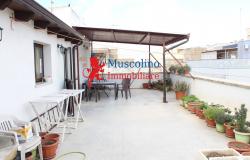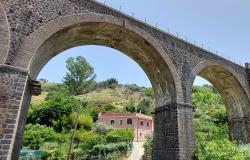 (ANSA) - A priceless set of ancient jewellery, probably from Egypt, is the latest archaeological jackpot experts have struck on this southern Italian island.
(ANSA) - A priceless set of ancient jewellery, probably from Egypt, is the latest archaeological jackpot experts have struck on this southern Italian island.
Excavations at the 16th-century BC settlement of Mursia, on the north-western part of the isle, have uncovered a beautiful oriental style ring, necklace and pair of ear-rings. The discovery comes on the back of a string of spectacular recent finds made here which date back to ancient Roman times.
"We can say that they are jewels made with great craftsmanship and of major archaeological importance," said Sebastiano Tusa, a top Italian archaeologist and the Island's Sea Superintendent.
The finds provide further evidence that Pantelleria was a major trading and cultural crossroads between Italy, Africa, Greece, Crete and Asia Minor in ancient times.
The ear-rings are made of bronze, the ring is composed of a series of flat, convex-shaped pieces, while the necklace is a string of round glass beads with a pointed bronze pendant. "The raw materials probably came from Cyprus or Anatolia, but their style suggests they were made in Egypt," Tusa explained.
"This type of broad ring was worn a great deal by women in the Second Intermediate Period of Ancient Egypt (1700-1550 BC). "The necklace should be Egyptian too because of the cobalt-blue and golden yellow tones of the glass beads." The archaeologist said further research was necessary to be sure the objects were from Egypt and not another part of the Near East. Tusa said the jewellery was found hidden in a cloth sack, probably to stop it being stolen by raiders like those who eventually burned down the Mursia settlement.
In recent weeks the dig has also unearthed vases, utensils and various other household objects at the site. Earlier in the summer archaeologists found an ancient Roman temple, dating to the first or second century AD, on the island on a hill known as Cossyria.
Experts hit gold in the same area two years ago when they brought to light the marble busts of Caesar, the emperor Titus and a high-born court lady. The busts were in an extraordinary state of
preservation, allowing them to be immediately identified.
However, there are still some lingering doubts about whether the woman's head is that of Antonia Minor or her daughter-in-law Agrippina Major, since female sculpture in the early imperial age differed from the lifelike images produced for men.
Instead, models of ideal beauty were preferred, topped with the elaborate and trendy hairstyles that were in vogue among the aristocratic women of the time. The woman's head is therefore without doubt that of an important member of the Julio-Claudian dynasty (14-68 AD), but there is still a slight question mark as to whether it is Agrippina, daughter of the Emperor Claudius.
Pantelleria, situated between Sicily and Tunisia, is also home to dozens of huge black 'Sesi' funeral mounts of piled rock, which show the island was inhabited in Neolithic times.








